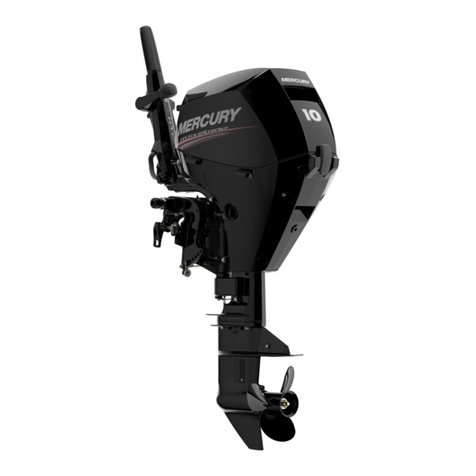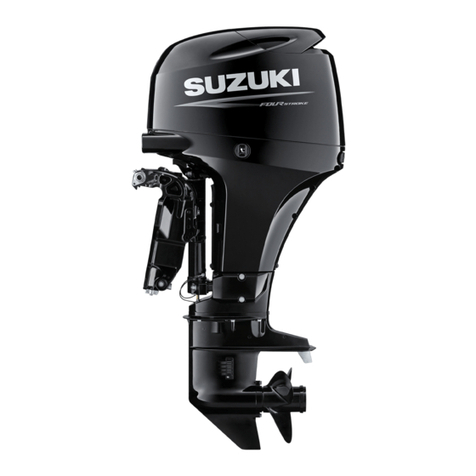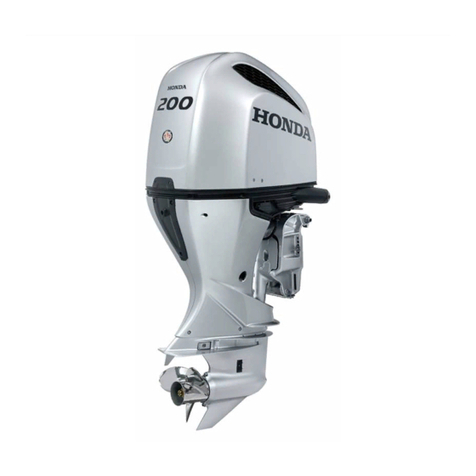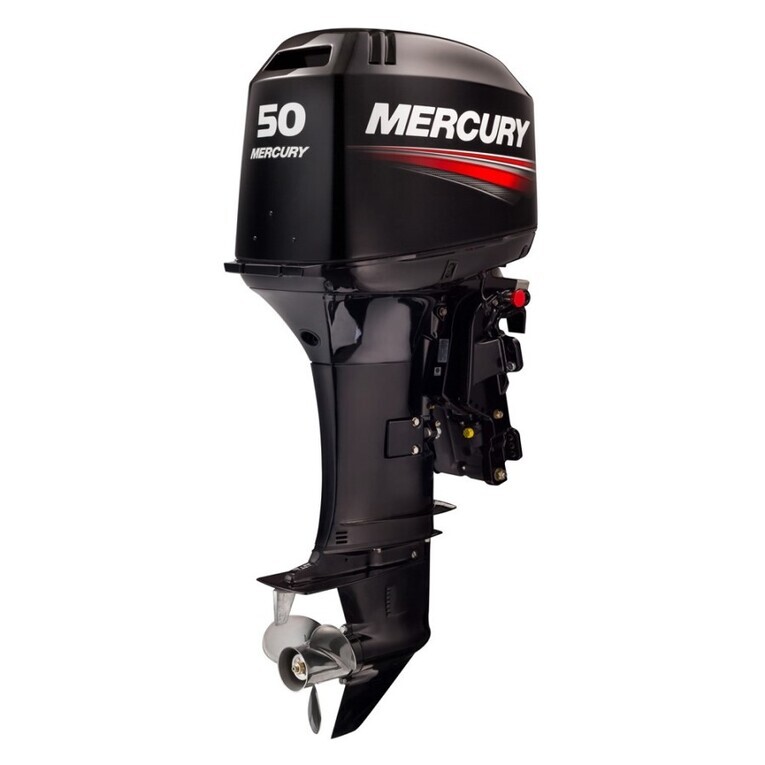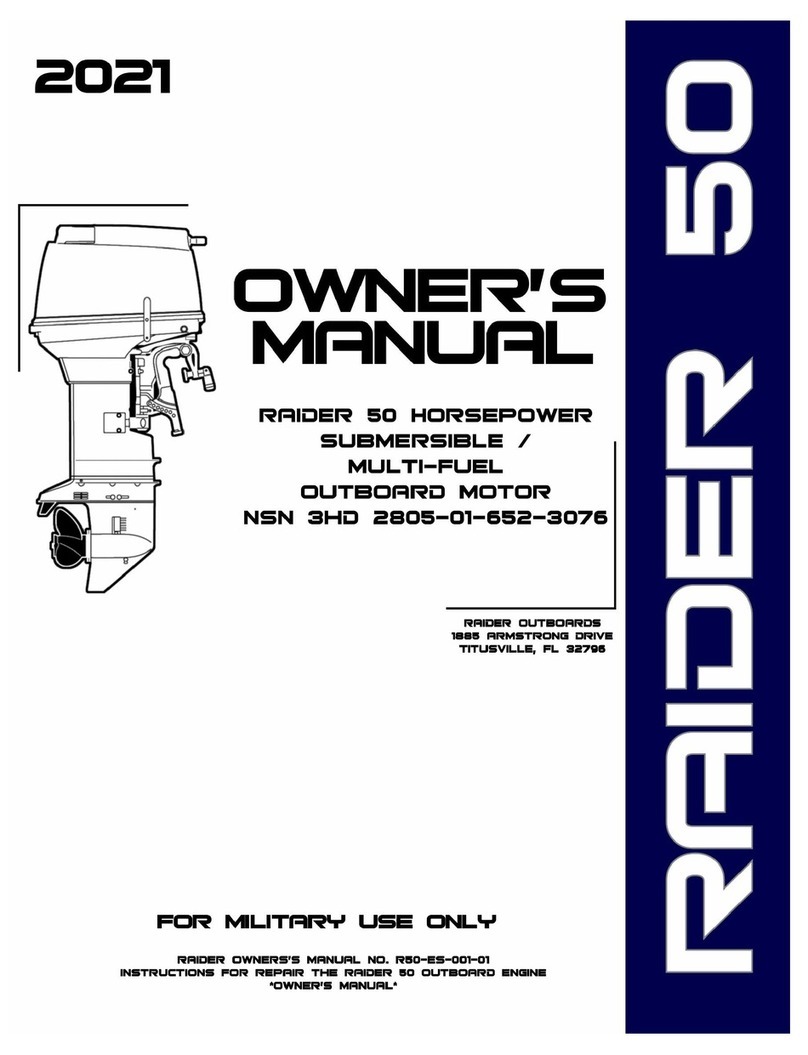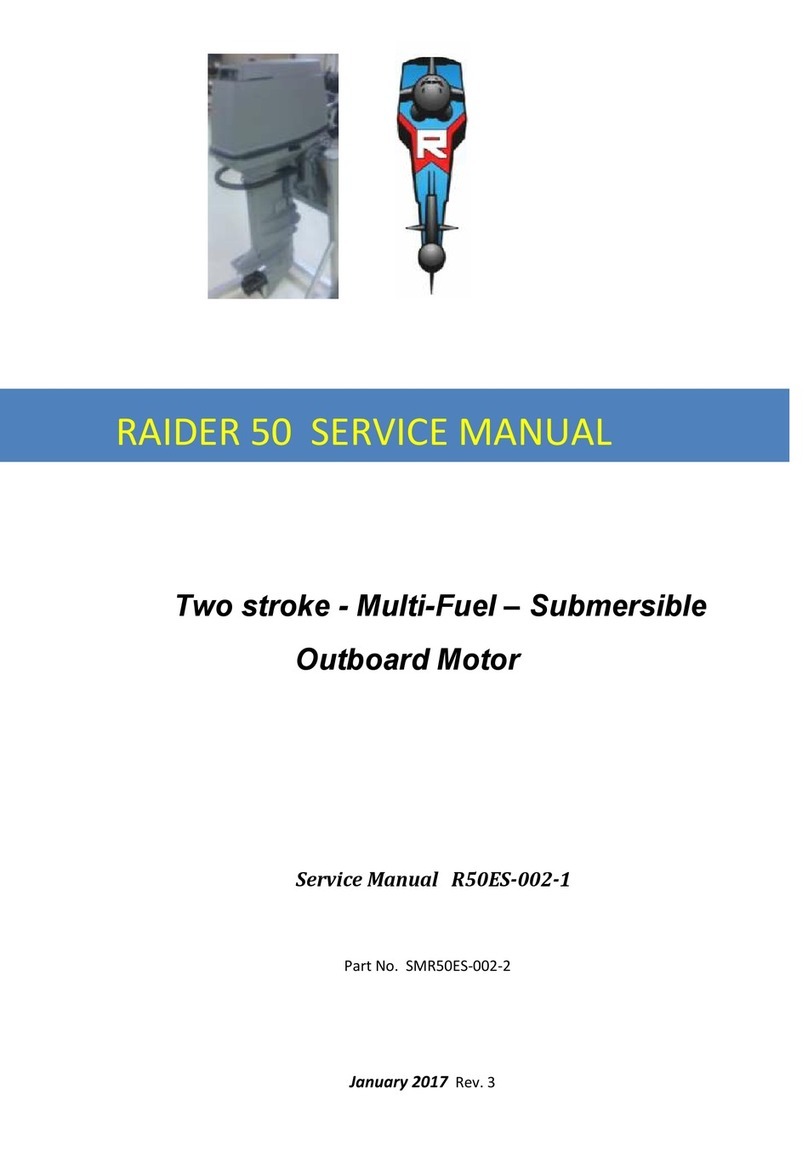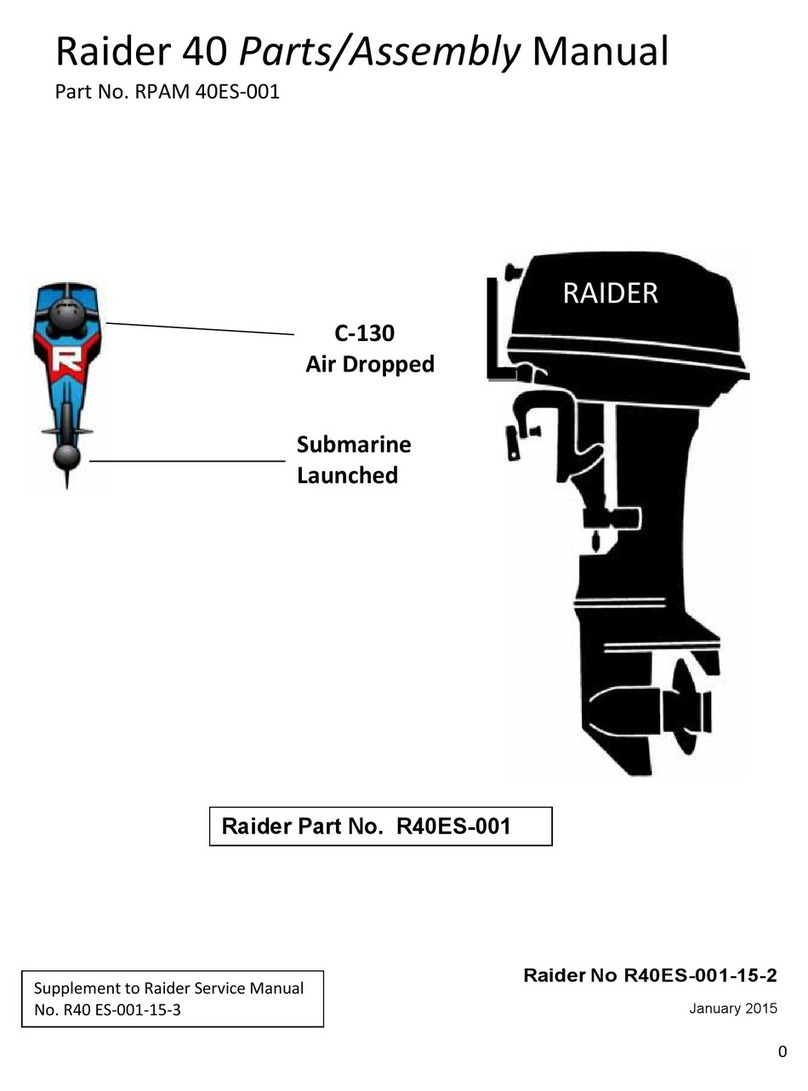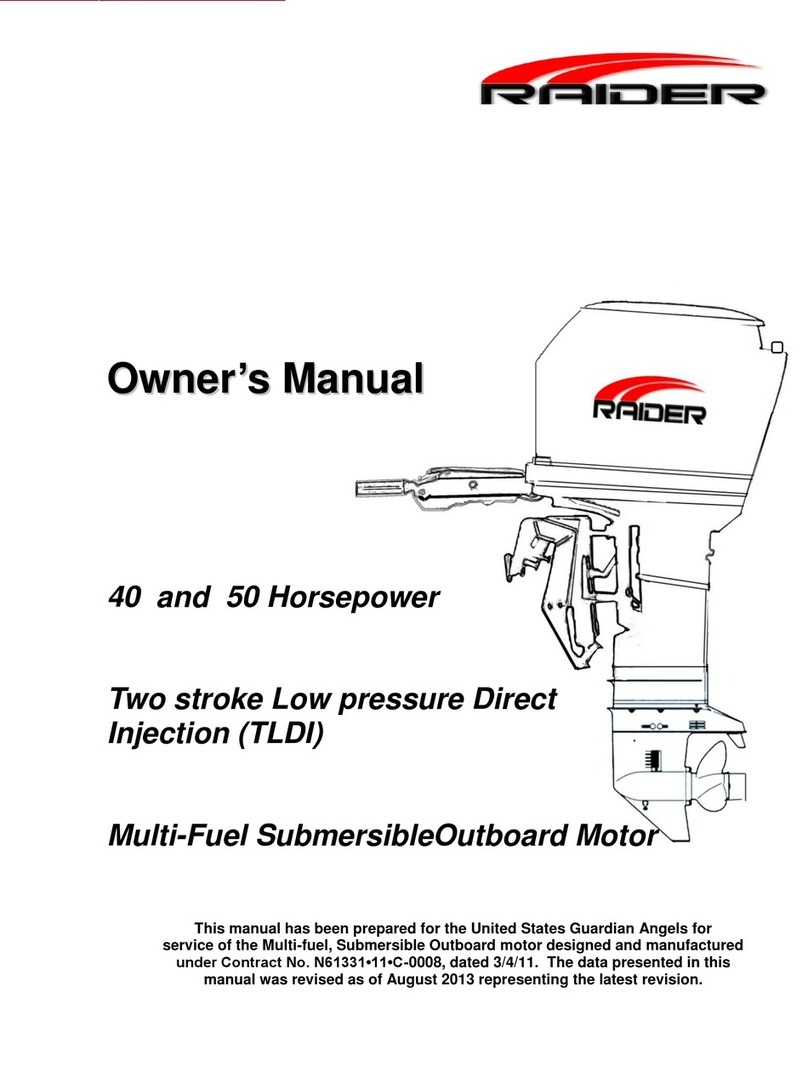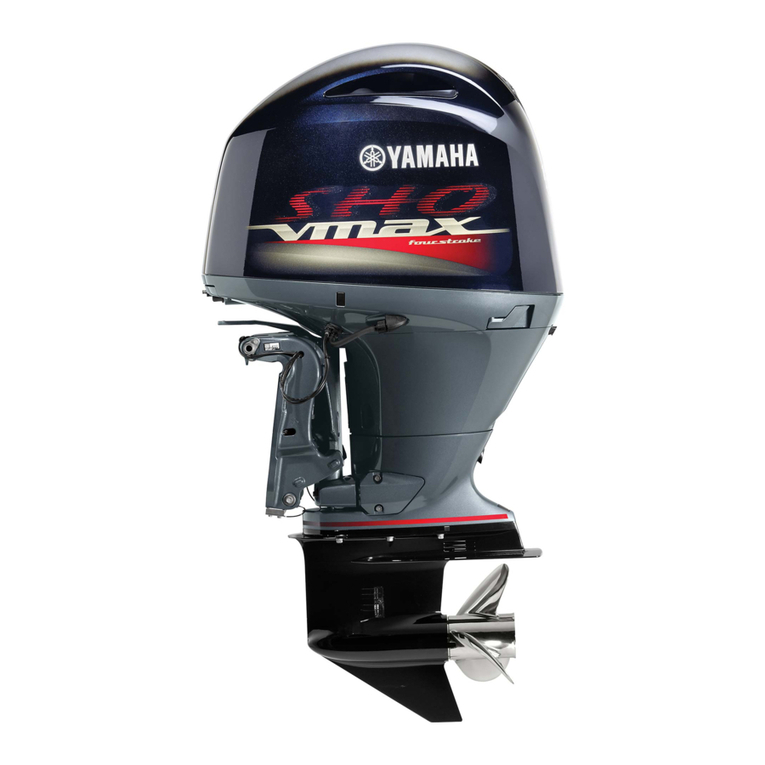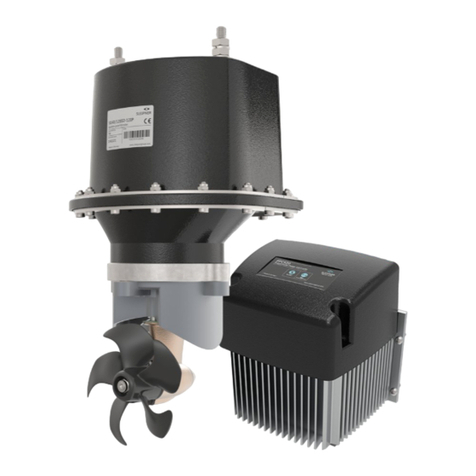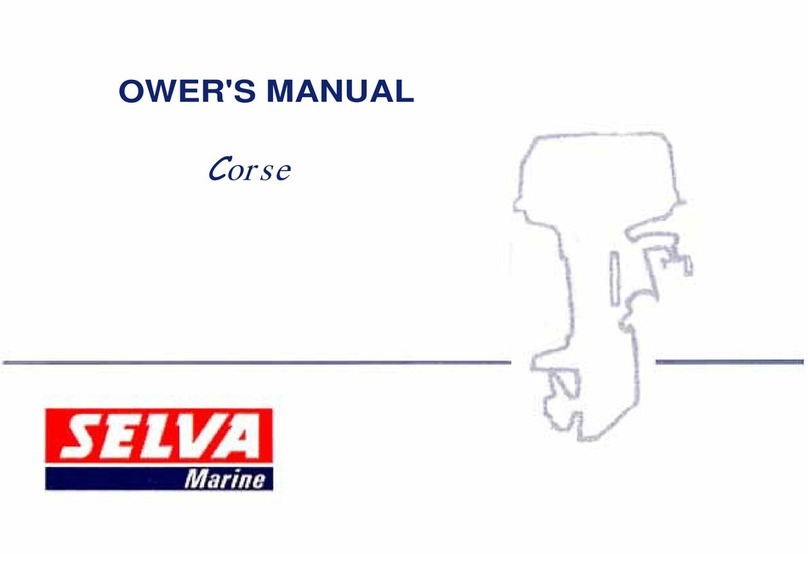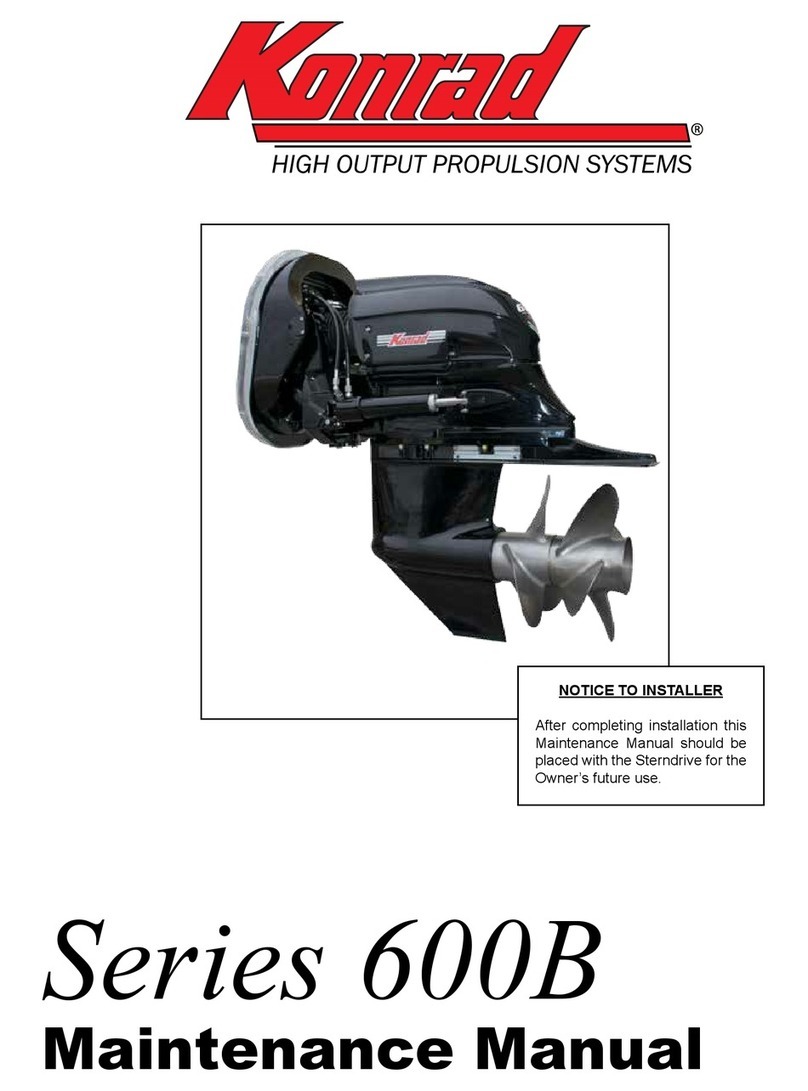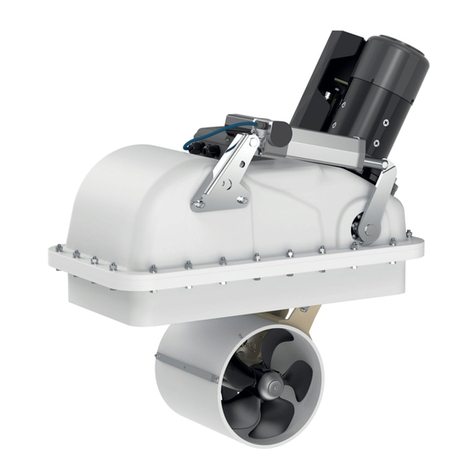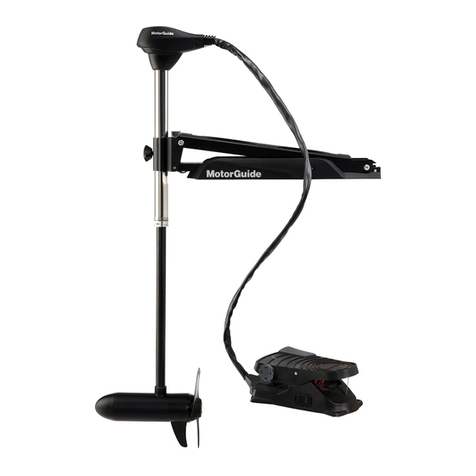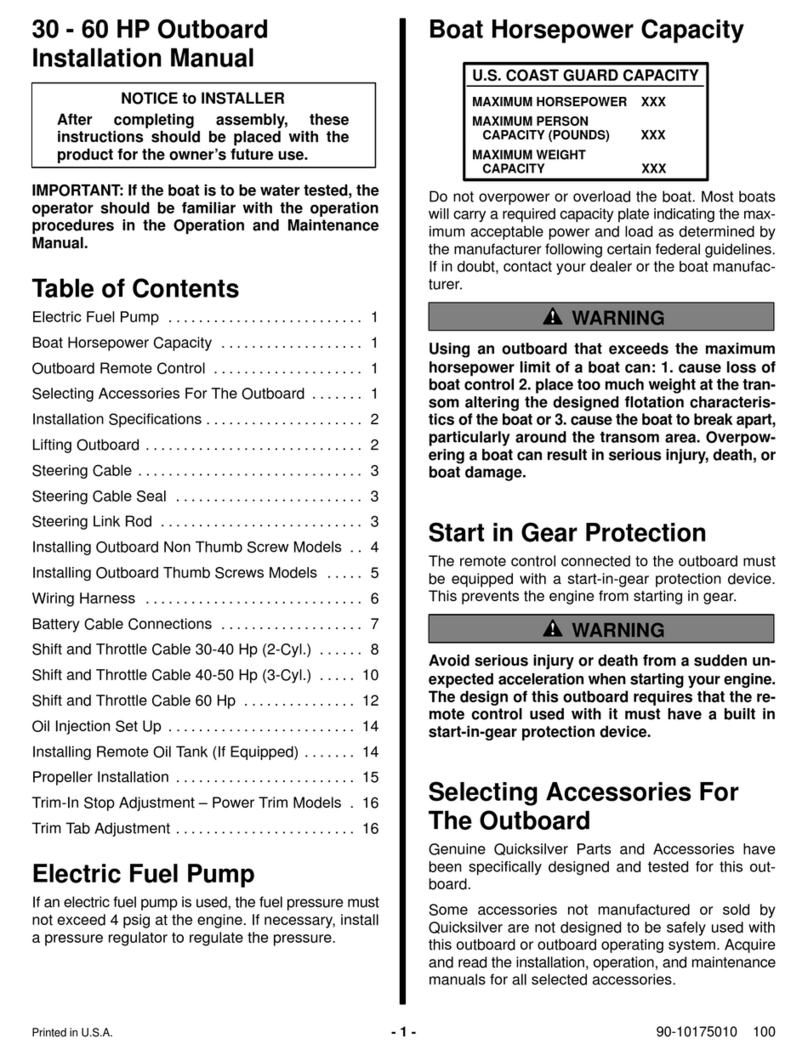
2
The limited warranty does not cover maintenance items. The following items
aresomeexamplesnot
covered by the limited warranty.
Spark
pl
ugs,
anode,
trim-tub,
propeller
,
fuel
filter
,
oil
filter
.
Carbon
brush.
Starter
rope,
shear-pin
,
split-pin,
bolt/nut
·
washer,
wire
cable.
Rubber
goods:
pump
impeller.
Oil
seal,
"O"
-ring,
fuel
pipe,
primer
bulb,
etc.,
vinyl
tube
.
The limited warranty will cover only your Raider Outboard and will not
cover the boat/RIB the Raider is
mounted on, the trailer, equipment, or accessories
associated with the product.
EMERGENCY STOP SWITCH
The stop switch will cut off the engine when the stop switch line is pulled out.
This line can be attached
to the body of the operator, effectively preventing
injuries from the propeller in case he/she falls
overboard.
We
highly r
ecommend
use of stop switch line because it can save the life
of
the
operator
if
something
bad
happens
.
However,
we
would
als
o
like
to
point
out
the
drawbacks
of
the
switch.
Accidental
activation
of
the
switch
(such
as
the
line
being
pulled
out
in
heavy
seas
)
could
cause
passengers
to
lose
their
balance
and
even
fall
overboard,
or
it
could
result
in
loss
of
power
in
heavy
seas,
strong
currents,
or
high
winds.
Loss
of
control
while
mooring
is
another
potential
hazard.
To prevent such hazardous situations, the
500 mm line is coiled and can
be
extended toa full 1,300mm.
WARNINGS
As the operator/driver of the boat, you are responsible for the safety of those
aboard and those in other
crafts around yours. Therefore you should possess thorough knowledge of correct
operation of the
Rubber Inflatable Boat (Wing/Zodiac), its accessories, and the Raider engine. To learn about the correct
operation and maintenance of the engine, please read through this manual
carefully.
It
is very difficult for a soldier standing or floating in the water to take evasive
action should he or she see
a power boat heading in his/her direction, even at a slow speed. Therefore, when your boat is in the
immediate vicinity of people in
the water to be picked up care should be used. A Safety Jet option (jet
pump) from Raider is available and especially useful for training purposes.
SERIOUS INJURY IS LIKELY IF A PERSON IN THE WATER MAKES
CONTACT WITH A MOVING BOAT, GEAR
HOUSING, PROPELLER, OR
ANY SOLID DEVICE RIGIDLY ATTACHED TO A BOAT OR GEAR
HOUSING.
Prior to any mission some individual must be assigned to perform all safety checks and to ensure that
all
lubrication and maintenance instructions are complied with for safe
operation. Periodic maintenance
should be performed. Correct periodic maintenance and good careof this outboard engine will lessen
the
chanceof problems and keepoverall performance of missions successful.
Fail
u
re
to
observe could result
in
mi
nor
personal
i
njury
or
product or
property
damage.
